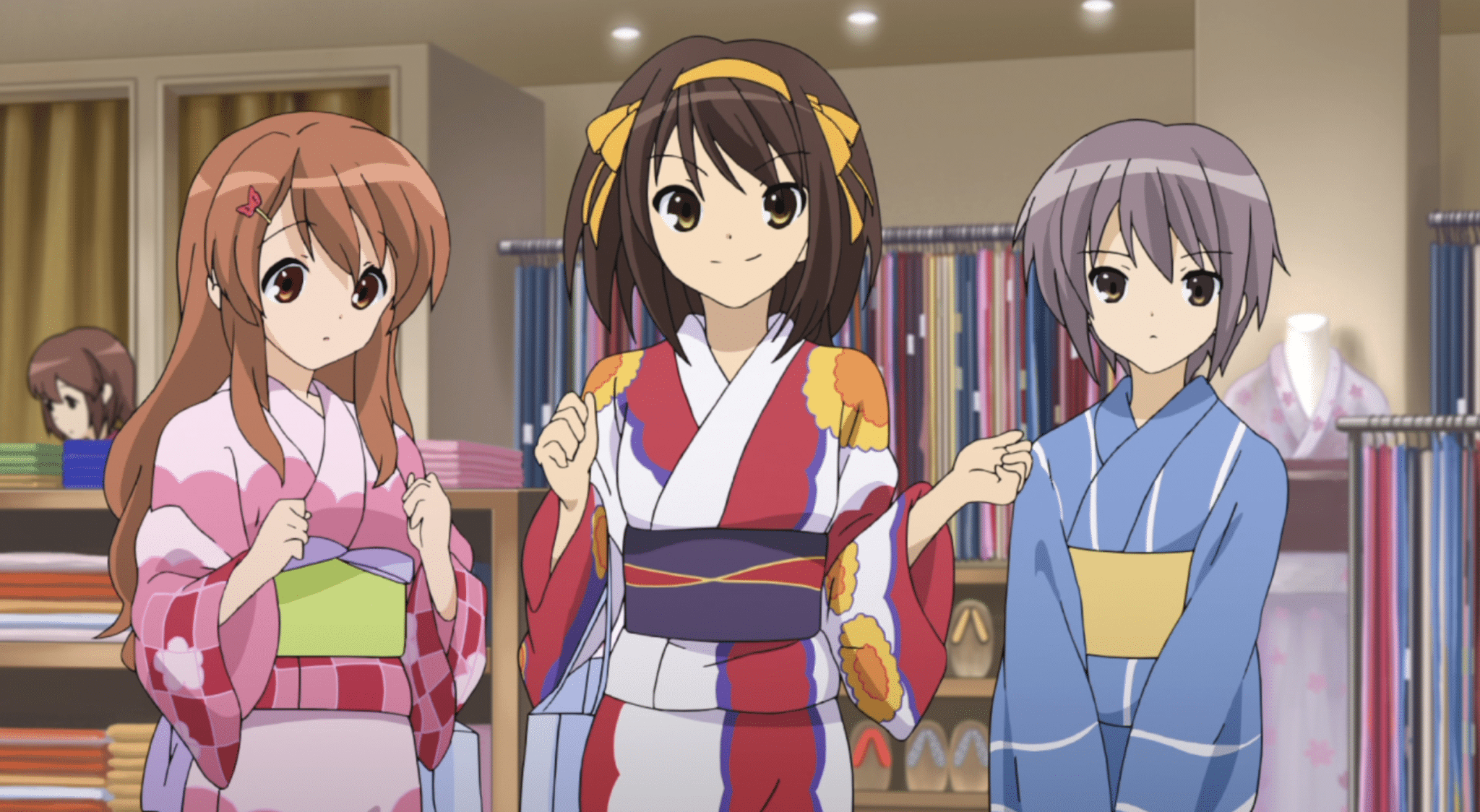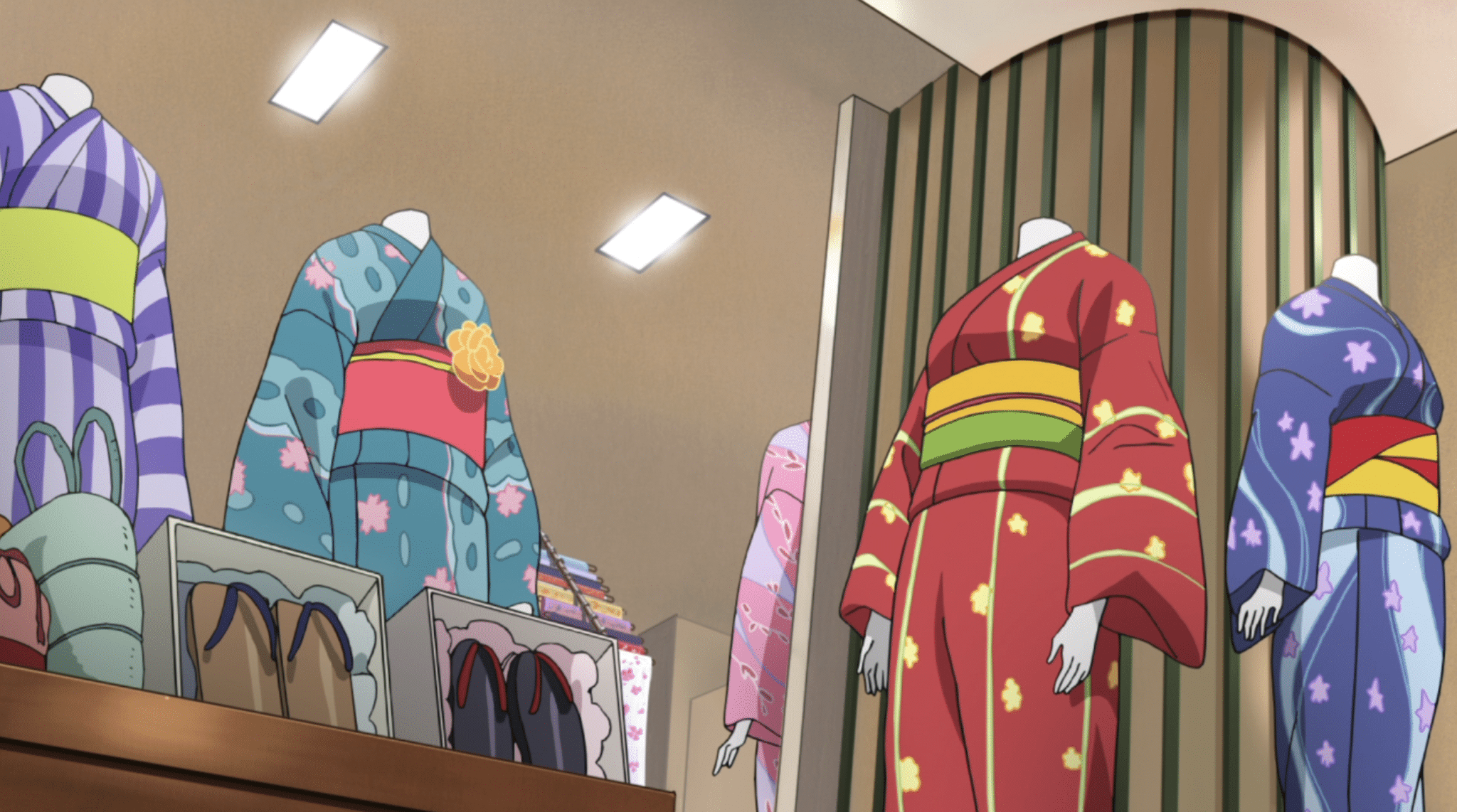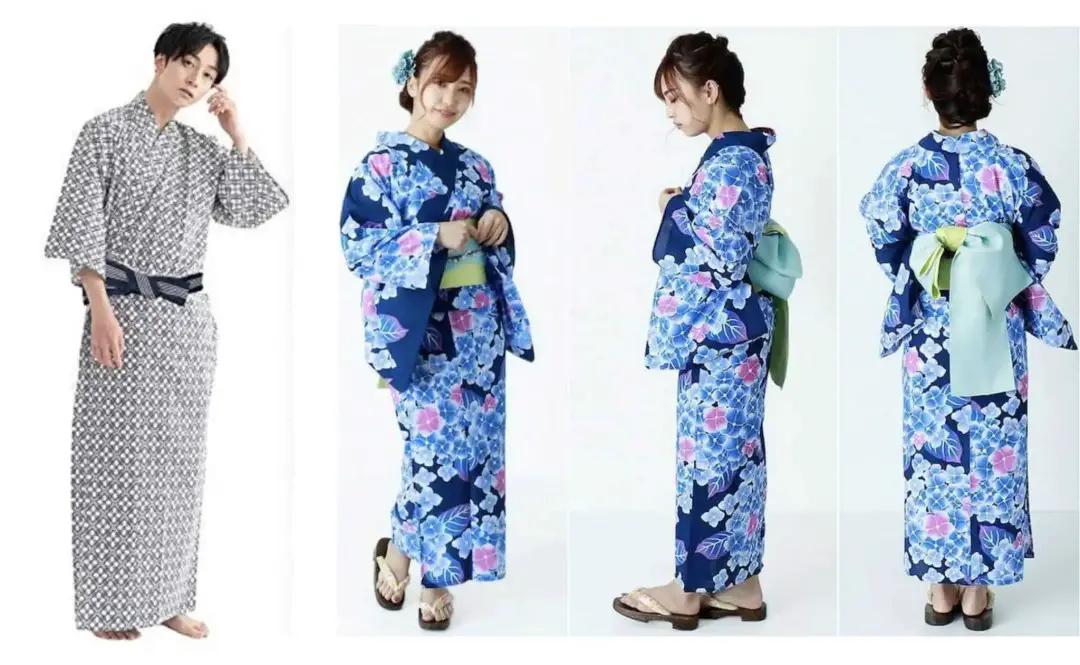What is a yukata? How does yukata differ from kimono?
If you’re a fan of anime or manga, you’ve probably seen characters wearing yukata or kimono. You may have wondered about these unmistakably Japanese clothes. (Traditional Chinese and Korean styles are different from Japanese ones.)
For example, many slice-of-life anime series will have an episode where the characters dress up in yukata for a summer matsuri or school festival. Or, a series may take place in a pre-Meiji historical setting when traditional Japanese clothing was worn all the time.
Let’s take a look at the traditional Japanese yukata.
Yukata is not kimono
First of all, you should avoid lumping all types of traditional Japanese clothing together as “kimono.” While yukata can be considered a type of kimono, the two things are not the same. There are subtle but important differences between the two. Many of these differences have to do with where and when they are worn.
When to wear yukata

Consider a typical summer matsuri. For these events, people may want to look nice, but they also want to be comfortable — it gets hot during summer. Festivals involve a lot of moving around, especially during bon odori, the obon folk dance festival.
As a result, people are more likely to wear yukata to such events, rather than kimono. A yukata is typically made of cooler, more lightweight materials, such as cotton. It is considered more casual, while the term “kimono” usually describes a heavier, more formal silk outfit.
Onsen (hot springs) inns will also sometimes provide guests with yukata to wear during their stay. Here again, the informal yukata is more practical and appropriate than a kimono would be. In general, onsen spa yukata tend to be simpler and plainer than yukata worn to a festival.
Yukata basics

When you break it down to its bare elements, a yukata is essentially a cotton robe. In fact, the word yukata literally translates as “bathrobe,” although that description obviously oversimplifies things.
Some unisex yukata can be worn by both men and women. For example, the above-mentioned onsen yukata pretty much has to be, to accommodate many different onsen tourists.
However, yukata designed for men are cut differently than female ones — among other things, the sleeves are less wide.
Both men and women wear obi, a traditional Japanese sash, with their yukata. The obi is essential, as it helps keep the yukata closed. Women typically wear their obi higher up on their body than men. A men’s obi is also thinner than the female equivalent.
Male yukata are typically designed with more drab colors and patterns. Female yukata will often feature flowery patterns. Younger girls will typically wear brighter colors (and more pink) than older women.
You should also wear open-toe sandals — such as wooden geta or even nice flip-flops — with yukata. People typically don’t wear tabi socks with yukata; those are reserved for kimono.
Yukata rules

Although yukata are less formal than kimono, there are still etiquette rules involved with wearing yukata properly. We don’t have space here for a complete set of detailed yukata wearing instructions. But we can offer a few tips:
- When wearing a yukata, the left side of the robe should be wrapped over the right, unless you’re a ghost. (For some reason, Japanese ghosts wear their yukata right over left.)
- You should wear undergarments under a yukata. Specialized yukata underwear exists, but a light-colored “v-neck” T-shirt and shorts will do.
- Always keep your yukata closed. Be careful if it’s windy — you may need to keep a hand on it. Your collar area and legs should be covered.
I hope this helps you understand the traditional Japanese yukata better.

